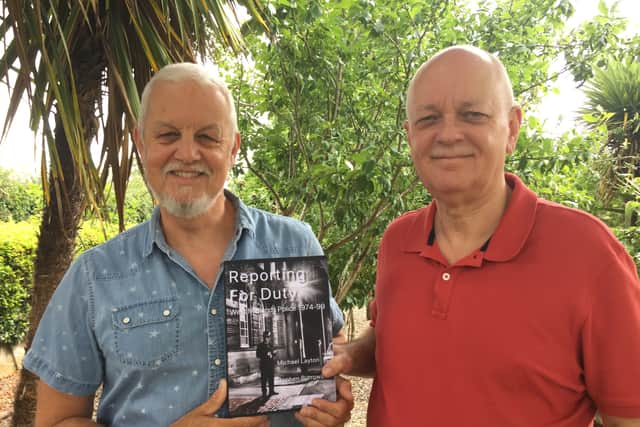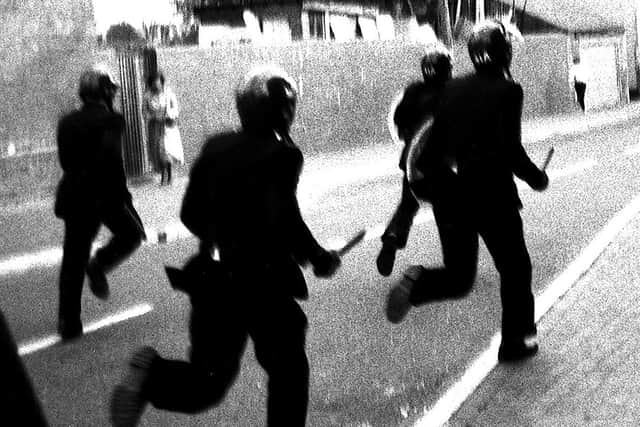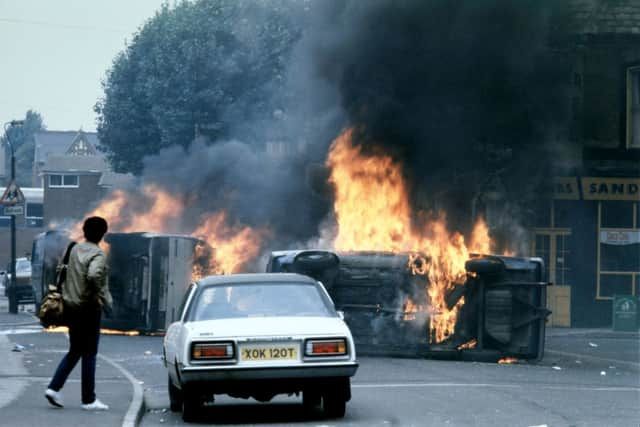‘I was a police man on the frontline during the Handsworth riots & & was offered tea by residents under siege’
This article contains affiliate links. We may earn a small commission on items purchased through this article, but that does not affect our editorial judgement.
and live on Freeview channel 276
For a brief moment in history a part of Birmingham burned. It blazed with hatred, violence and destruction.
From September 9 to 11, 1985, the Handsworth riots raged, triggered by the arrest of a man near the Acapulco Café, Lozells, and a raid on the Villa Cross Pub.
Advertisement
Hide AdAdvertisement
Hide AdThe toll was immense. It came four years after the 1981 Handsworth Riots which are featured in the TV drama This Town by Peaky Blinders creator Steven Knight.
In 1985 Brothers Kassamali and Amirali Moledina died in a fire at their post office. Two others were unaccounted for, 35 were injured. In all, 45 shops were torched and looted and 1,500 police officers were called in to restore order.
In truth, Handsworth was a dry powder keg waiting to explode. Less than five per cent of the area’s summer school-leavers had found jobs and there was growing tension between police and younger members of the community.


Get the latest headlines delivered straight to your inbox with BirminghamWorld’s free newsletter Stephen Burrows, then a police constable who would later rise to chief superintendent, was on the front line during those terrible times. He recalls the riots in his and fellow former chief superintendent Mike Layton’s book, Reporting for Duty.
Advertisement
Hide AdAdvertisement
Hide AdThis is Pc Burrows’ story: “We were sent to Thornhill Road Police Station, Handsworth, where we were hurriedly fed and sat around the yard by the van, awaiting orders. We must have arrived at dawn because I remember looking through the van window as we drove past Lozells Road and seeing the smoking ruins that looked like pictures of the Blitz.
“There had been a temporary lull in the disorder and many weary colleagues, who had been on duty since the previous evening, were going off duty to be replaced by us. Their faces and the devastation in the streets made me realise this was the most serious and potentially dangerous incident I had been a part of.
“It must have been about 10am when our wait ended. We were told that trouble had started again and into the van we climbed. I can remember the superintendent coming to the open back door of the van and wishing us luck. I can still recall the feeling – I was going into battle.
“I already knew that people had died the previous night in the Post Office that they ran after they decided to remain in the premises to protect it from the mob. Tensions were high and there were reports that many troublemakers from outside Handsworth were travelling to ‘have a go’ at police and maybe do a spot of incidental looting. We were deployed to Heathfield Road in public order attire and had shields and what we termed NATO helmets. We drove around for a while, but it seemed to be quiet.


Locals offered us tea as we were on police duty during the Handsworth Riots in Birmingham
Advertisement
Hide AdAdvertisement
Hide Ad“My best memory occurred when I saw a black man, probably in his 50s, emerge from a house opposite the shops. He approached us. “Do you all want tea?” he asked politely. “We nodded enthusiastically. About 10 minutes later he emerged with a huge teapot and cups and saucers on a tray and we took tea by the roadside.
“The morning passed and we were informed that the then Home Secretary Douglas Hurd was attending to inspect the scene at lunchtime. We were deployed to the area. Crowds of youths began to gather on the street again and the mood changed for the worse.
“As a police officer, you develop a sixth sense for trouble, an ability to almost taste tension, and all my sensors were ringing. Hurd was a tall man and I can remember seeing him approaching, surrounded by a cluster of police officers. Suddenly, bricks and colourful abuse started flying from the crowd towards Hurd who beat a hasty retreat. Shields were quickly gathered from the van and a shield wall formed.


“A shield wall with officers behind it has an immediate effect on a disorderly crowd. They throw things at it and this crowd did not disappoint as bricks and bottles began to bounce off shields. We advanced and I received my first and only experience of being petrol-bombed in anger as several were lobbed from the crowd.
Advertisement
Hide AdAdvertisement
Hide Ad“The crowd broke and ran, leaving a milk crate containing half-a-dozen unused petrol-bombs which were seized as evidence. We spent the rest of the day chasing groups of youths around the Birchfield Road and Heathfield Road areas. They rampaged through the Birchfield Road shopping centre and the Post Office in Rookery Road was raided.
“We eventually restored order later that night, but the damage was done and burnt buildings, burnt out and overturned cars, bottles, bricks and makeshift barricades littered the streets. Every time I see a war film, I’m reminded of that day.”
Comment Guidelines
National World encourages reader discussion on our stories. User feedback, insights and back-and-forth exchanges add a rich layer of context to reporting. Please review our Community Guidelines before commenting.
